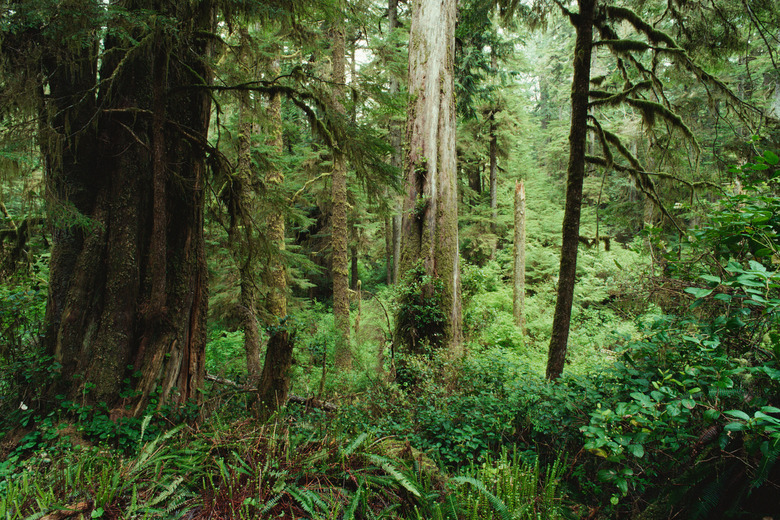The Best Fertilizer For A Cedar Tree
Cedars are a very hardy tree or shrub that often does very well without fertilization. However, fertilizing your cedar can help to encourage more rapid, healthy growth. The type of fertilizer you need will depend on how recently you have planted the cedar and the type of soil in which the cedar grows.
Cedars are a very hardy tree or shrub that often does very well without fertilization. However, fertilizing your cedar can help to encourage more rapid, healthy growth. The type of fertilizer you need will depend on how recently you have planted the cedar and the type of soil in which the cedar grows.
Soil Types
The best fertilizer for your cedar will depend on the type of soil your tree grows in. Many cedars prefer a more acidic soil. Before fertilizing, test the soil acidity with a pH test kit. PH test kits are available at many home and garden supply stores or tree nurseries.
- Cedars are a very hardy tree or shrub that often does very well without fertilization.
- The best fertilizer for your cedar will depend on the type of soil your tree grows in.
Types of Fertilizer
Newly planted cedars can benefit from a high phosphorous fertilizer. In many cases, adding a fertilizer with a balance similar to 5-15-5 into water and thoroughly watering the newly planted tree can help to reduce transplant shock. Subsequent fertilization should be with a balanced fertilizer or with a higher nitrogen fertilizer with a balance similar to 30-10-10. A good organic alternative organic fertilizer is a combination of blood meal and bone meal.
Bennefits
Giving your cedar more phosphorous at planting will help provide nutrients to the roots as the tree becomes established in the new location. Higher nitrogen levels after the tree is established will help produce more green growth on the tree or shrub. Organic fertilizers at either time will provide a more gentle fertilization that will help protect soil conditions for the life of the tree.
- Newly planted cedars can benefit from a high phosphorous fertilizer.
- Organic fertilizers at either time will provide a more gentle fertilization that will help protect soil conditions for the life of the tree.
Considerations
If your tree is showing signs of under-fertilization, such as yellow leaves, you may want to have the needles tested for nitrogen content. In some cases, soil pH problems, such as a soil that isn't acidic enough, may appear to be a fertilization problem. If your leaves have enough nitrogen, the yellowing leaves may be caused by another problem.
When to Fertilize
Begin fertilizing either at planting or in the spring after the tree has begun to grow. Cedars may appear healthy in the winter, but are often dormant. Fertilizing in the winter can cause a buildup of fertilizer in the soil that may result in spring over fertilization. Stop fertilizing in the fall when deciduous trees begin to lose their leaves.
- If your tree is showing signs of under-fertilization, such as yellow leaves, you may want to have the needles tested for nitrogen content.
- Fertilizing in the winter can cause a buildup of fertilizer in the soil that may result in spring over fertilization.
